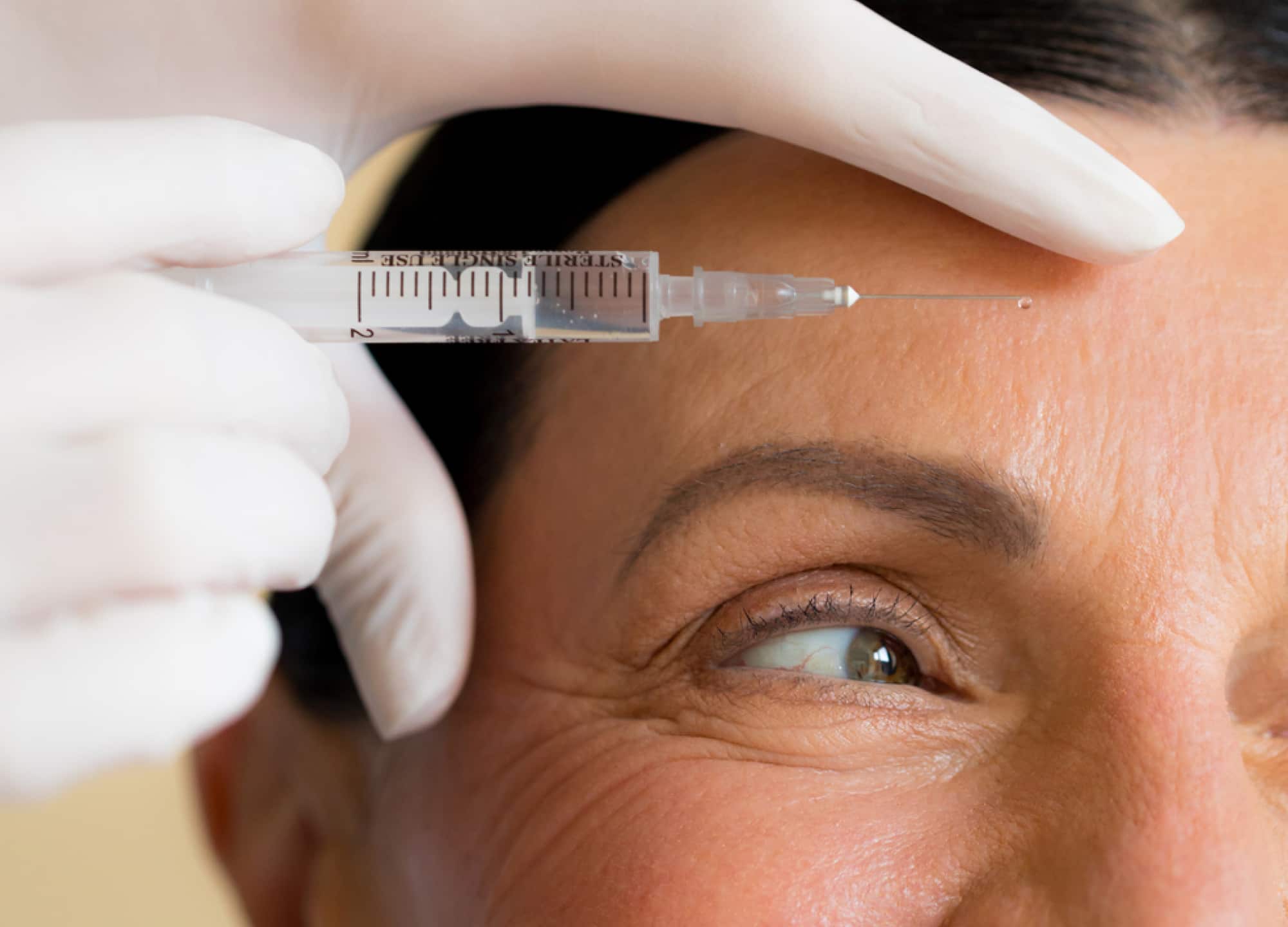Featured Experts
Dr. Norman Rowe, a board-certified plastic surgeon in New York City
Dr. Doris Day, a board-certified dermatologist based in New York City
Once upon a time, the term Botox was synonymous with “frozen,” with the general understanding in the zeitgeist being that, after a few injections of the neuromodulator—the first of several now on the market—you wouldn’t be able to move your face, from your eyebrows to your hairline. The good news? This hasn’t been the case for years, and many doctors say a more natural approach has become the norm.
Yet some patients still request the frozen look, and some injectors are known for being heavy-handed with neurotoxin—and this can have serious consequences for the rest of your face. Doctors are now sharing the risks on social media, warning that by inactivating your forehead muscle via botulinum toxin, you’re effectively forcing it to atrophy—and since your forehead muscle holds up the brows, your brows can therefore droop.
Ultimately, “it falls under the adage of ‘Use it or lose it,’” says Dr. Norman Rowe, a board-certified plastic surgeon in New York City, who’s seen this phenomenon among his patients. With that, here’s what you should know.
Why freezing your forehead with Botox is risky
Basically, the muscles in the face have two different roles: function, meaning they have a physical purpose (in this case, holding up the brows), and facial expression, meaning they help you smile, frown, and so on. Some muscles have both—and your forehead muscle is one of them.
“Your forehead movement has an expression of raising your brows in surprise, or trying to be more present,” says Dr. Doris Day, a board-certified dermatologist based in New York City. “But it also has a function of holding up your brows to keep your eyebrows out of your eyes.” This function, she says, is involuntary, and it keeps your brows from dropping and your eyelids from looking heavy.
@ellengendlermd Replying to @_._bix_._ #atrophy #botox #botoxnatural #botoxinjection #botoxcheck #dermatologist #dermdoctor #dermatologydoctor #doctorsoftiktok #dermatologistontiktok #dermatologistsoftiktok #dermatologistskincare #dermatologistreacts #skincaretips #skincare101 #skintok ♬ Lazy Sunday – Official Sound Studio
Once you take that muscle out of commission, effectively paralyzing it with botulinum toxin, the combo of gravity and the opposing muscles—those that pull the brows down—can lead to muscle atrophy, meaning the muscle weakens and shrivels. And this impacts both facial expression and function.
It’s most common in people who frequently freeze their foreheads. For instance, Dr. Rowe most often sees it “in patients who continually use Botox and get reinjected before the previous Botox wears off,” he says.
Dr. Day, for her part, also sees it among patients who expect dramatic results from their injections and aren’t happy with any movement on the forehead, despite it being the norm—not to mention, the more natural look. This can also actually defeat the purpose of getting botulinum toxin in the first place. In atrophying the muscle, “you are accelerating the aging process,” she says.
How to tell if you have forehead muscle atrophy from Botox
For one, you might notice it in photos. Another telltale sign is new lines in your forehead, especially right above the brow. When people start to have lines that aren’t where the Botox was or lines right above the brow, it means they’re very dependent on the forehead muscle, according to Dr. Day. “Either muscle fibers that you missed are going to overcompensate and you’re going to see lines at rest or you’re going to start making different wrinkles in places that weren’t injected,” she explains.
What you can do about it
The bad news? There’s no easy solution to this, since the only way to prevent muscle atrophy is to use the muscle in question—which means no longer using botulinum toxin to freeze it. However, “once you stop using Botox, the muscle will gain its strength back and then cause wrinkles again,” says Dr. Rowe. On the flip side, however, “the longer you use Botox or any neuromodulator, the more atrophy or shrinkage you get on the muscles,” he says.
The only way around it is to use botulinum toxin “to balance, to redirect, but not to take away the function,” says Dr. Day. In other words, the injector has to take a holistic approach to the injections, applying only where they’re needed instead of indiscriminately across the forehead. If you’re not satisfied with the results—or they don’t restore enough lift to the brow—then it might be time for a surgical option.
Is it possible to avoid muscle atrophy?
What makes this tricky is that there’s no set amount of botulinum toxin that constitutes freezing the forehead. “Some people need more, some people need less,” says Dr. Day. To that end, it’s important to go to an experienced provider who can assess your anatomy, analyze your facial expressions, and use those to determine the best placement.
And there’s no set amount of time that makes this possible, since it can depend on your facial anatomy, your genetics, and other nuances. That said, “the older you are and the naturally heavier your brows and your lids are to begin with, the sooner it’s going to happen,” says Dr. Day.
If you’re not happy with your injectables and notice your brows are looking lower or heavier than they used to, then noninvasive options might no longer be cutting it. “The time to do a surgical procedure is when the effect of the Botox does not get the patient to where they desire to be,” says Dr. Rowe. That could mean a brow lift or blepharoplasty—which, while not as easy as injectables, can restore a long-term lift.











